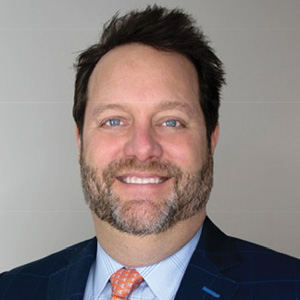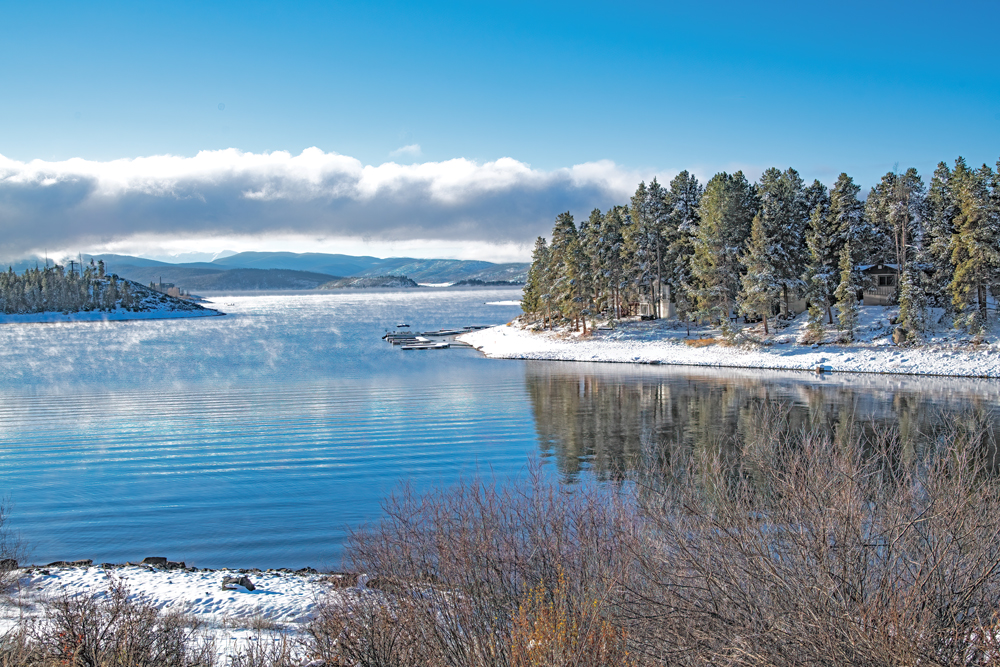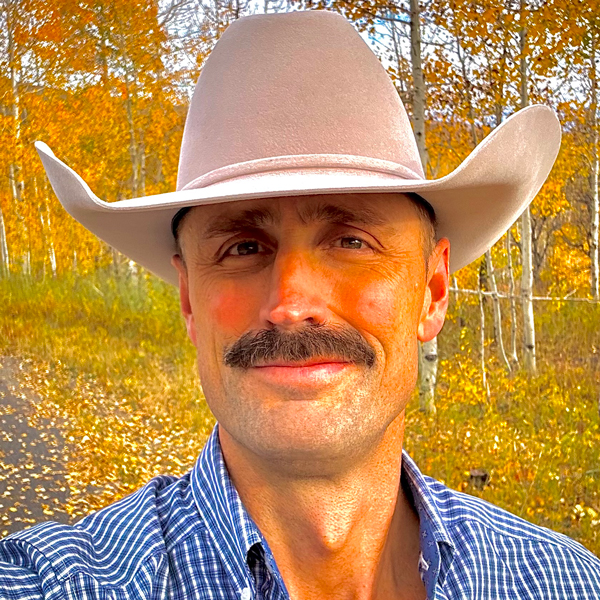Connecting the World: How the Supply Chain Affects and Connects Communities and Our Membership
In today’s global economy, supply chains are vital networks that influence not only the flow of goods, but also the welfare of communities and the success of our corporate members. Understanding those impacts can foster growth, sustainability and positive social outcomes and is why supply chain is a core competency of the professional development program at IAMC. I’ll share more on professional development in the coming months, but for now I’ll highlight how supply chain impacts our members.

For corporate members, the supply chain is a critical component of strategic planning and operational success. Efficient supply chain management can lead to cost reductions, improved productivity and enhanced competitiveness. By optimizing logistics, inventory and supplier relationships, companies can achieve significant operational efficiencies and realize financial benefits. Through innovation and collaboration, our members can leverage each other’s strengths, improve our interactions and drive best practices. That shared experience is core to what IAMC does and does well.
Service providers are the customer link to corporates, economic developers and each other. They are the driving force behind the availability, pricing and quality of products and services that we need to complete our projects. How they assist in optimizing the supply chain ensures we receive their desired products in a timely fashion and at competitive prices. This optimization not only enhances customer satisfaction but also fosters lasting relationships. The reliance and trust is core to what IAMC does and does well.
Supply chains are the backbone of economic development in communities. They provide impactful investment, stimulate local economies and facilitate access to goods and services. A robust supply chain can uplift a community by creating employment opportunities in both logistics/transportation and manufacturing roles. Moreover, supply chains can support local businesses by integrating them into broader networks, allowing them to reach new markets and expand their operations. However, the impact of supply chains on communities is not solely economic. They contribute to the overall well-being of the community through public/private partnerships and corporate responsibility. Driving quality impacts is core to what IAMC does and does well.
Overall, the supply chain is a powerful connector that influences and shapes the interactions between our members. By understanding and harnessing this influence, each of our organizations can drive positive change, promote sustainability and achieve long-term success. As the world continues to grow more interconnected, come connect with us at IAMC and become a part of the positive impact!
On the Level: A Conversation with James Eklund About Water

James Eklund and colleagues recently represented Three Lakes Watershed Association in the proposal of a resolution (later passed by the Colorado General Assembly) recognizing the importance of water clarity in Grand Lake, the the state’s largest and deepest natural lake that sits at the headwaters of the Colorado River.
Photo by John Morrison: Getty Images
You only have to check in on this year’s testimony in the Texas capitol about future water infrastructure needs measured in the tens of billions of dollars to know: Water has always been a high-priority issue. It just takes us a while to rise to its level.
For years, James Eklund has been doing his level best to see water treated with the respect it deserves. The leader of the Water & Natural Resources practice at law firm Taft/Sherman & Howard, he is a recognized authority on water management in the American West and was the architect of Colorado’s Water Plan. He spoke to an IAMC Roundtable in November. In January his Denver-based law firm Sherman & Howard merged with Taft, known in part for the landmark water contamination lawsuit work of Robert Bilott dramatized in the film “Dark Waters.”
“If someone made a movie about me and I got a book published, my head would be way too big for this hat,” says Eklund on a Teams call from Denver, his silverbelly felt hat from Greeley Hat Works firmly atop his head, as he describes how personable Bilott is even as he deals with the crush of attention. “Everybody who has forever chemicals issues knocks on his door” wanting guidance, he says. “It’s a great pivot for him from that class action against DuPont to being really at the forefront of PFAS policy in the country. I’m excited about that.”
Getting corporate leaders excited about water historically has been a taller order.
“They aren’t thinking about it enough,” Eklund says. It’s not just water quality but, especially in the West, water quantity. “We’ve seen a real paradigm shift,” he says. Historically, “if you were building a new industrial plant of any size in the U.S., whether in the West or East, it was taken for granted you’d go through a process, get a ‘will serve’ letter from the water provider and they’d commit to bring a certain amount of water to you [by] location, time and amount. You don’t have to think about it after that. Now we’re in a place where — especially in hotbeds of industrial growth like Phoenix, the Front Range, Austin, Reno, Southern California and Salt Lake City — markets competing for those site selectors are having to do their own due diligence on water. It’s not good enough anymore to just take the ‘will serve’ letter and say, ‘Here, this handles the water part of our operation and we don’t really need to touch water again.’ ”
Like electricity (also of rising concern today), water, even a dozen years ago, didn’t necessarily rank as something to be concerned about when doing due diligence on a site or deciding what region you wanted to be in. “Now it is,” Eklund says. He has only to look out his window at accumulating snow and think of the fires in Los Angeles to recall, “Those things can flip. We had a major wildfire here in Denver two years ago that burned a big chunk of Louisville to the north. We’ve always had drought, flooding, dry years. The difference is the severity of those things is growing more acute.
“Wildfires are hotter, which means they’re sterilizing the soil and ground cover won’t come back,” he explains. “Healthy fires, which we’re told we need, we’re not getting. You get all sorts of bad things for watershed. The snow pack doesn’t behave the way you need it to when it’s sitting on top of that burn scar. Everything is connected. When looking at risk management in an industrial setting, you have to take a hard look at your water supply and, increasingly, the quality of that water supply.”

“When looking at risk management in an industrial setting, you have to take a hard look at your water supply and, increasingly, the quality of that water supply.”
— James Eklund
Get Sophisticated Fast
Eklund’s home state is an important place to be for water. It may have only 7 million people compared to 40 million in California, but as the home of the Continental Divide, Colorado is at the headwaters of not only the Colorado River, but the Arkansas, Platte and Rio Grande too. “Eighteen downstream states and Mexico get water that starts in Colorado,” he says. The Colorado River touches the lives of 40 million people and also touches 40% of the U.S. economy. One barometer of water’s growing importance is scientific conferences, says Eklund, who used to pride himself on being the only lawyer and one of few non-scientists in attendance. Now he sees more and more experts from the insurance world. “They are nervous we are not adequately pricing in risk. We’re certainly not pricing it into the cost of water.”
Right now, Eklund says, it’s important for states to get sophisticated fast with their apparatus for managing water supply.
“That’s what our governor said when we were developing that water plan. California, Texas and other states had water plans for decades, and the fact we didn’t have one for the most valuable asset in our natural resources portfolio was just malpractice to him. We had to get down to business with that, and we did. Arizona has a front row seat to that right now, with incredible, unprecedented growth. At the same time, the Colorado River is headed in the wrong direction in terms of supply and sustainability. It’s definitely a difficult time, but the risk that needs to be accounted for just has to include water supply and water quality.”
Among the resources he suggests is the water stress map maintained by the Water Resources Institute, which now scores that stress down to the county level. “That level of detail is what you need,” Eklund says, in order to properly plan and diversify water supply. At the IAMC Roundtable, he says, “a lot of people were interested in what metric you would use to determine the risk. There are a number of tools out there that I think are going to get better, especially running those through artificial intelligence. I’m hoping we see a sea change in the forecasting models we use … Increasingly, big water providers like Denver Water are flying LIDAR flights over the snow pack and feeding that into their models. But all that said, we’re getting warmer. All tiers of our state are warmer than they were 20 years ago. So the snowpack we do get is not behaving the way it used to. It’s melting off more quickly and sublimating in some cases — it goes from solid to gas and skips the water part. It literally evaporates, disappears, and doesn’t show up in the reservoirs where we need it to be.”
A dramatic process like sublimation might be just the ticket to get the rest of us to stop sublimating our feelings and develop robust solutions for turning an unacceptable reality into an acceptable future. But it will take the private sector stepping up to the plate, Eklund says, and the government doing more than mere forecasting and restriction.
“If you want a food or beverage company to use less water in their product, you have to tell them what they get for doing that. It can’t be more regulation. One client manufactures a gray water system that takes bath and shower water and treats it to nearly a drinking water standard and can save 20% to 25% of the water needed for a home. But government regulators don’t really care about gray water adoption and just put out the standard. Without talking to the private sector about what it needs to see, there’s just a lot of inefficiency out there that can get cleaned up.”
Eklund says it’s not accurate for the environmental community to always insist there isn’t enough water for companies such as TSMC in Phoenix to move to a location. “That’s not true,” he says. “We have not just enough water for that development, we have more than enough for that development and for agriculture. We have enough water if we manage it correctly.
“If we don’t,” he says, “we don’t.”
